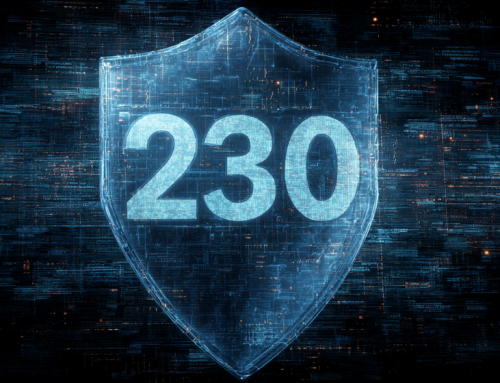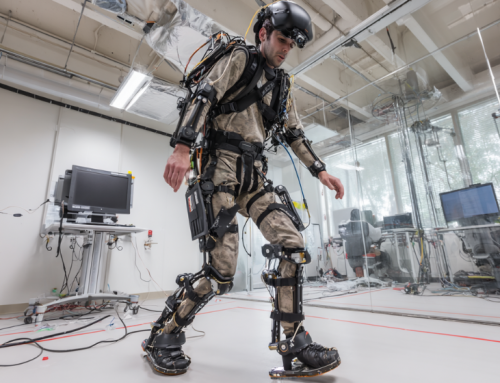
Firearm Data Release Planned after Free Speech Battle
Following a legal battle, the website Defense Distributed won the ability to post instructions to print a 3D gun, planned for today⎯until attorney general in Washington state issued an injunction late yesterday. It stated that the release of the plans would put the country in “clear and present danger” and halted the plans from moving forward.
A hearing on the case is scheduled August 10. Washington state’s attorney general is one of 21 around the country suing to block access to the plans, according to Buzzfeed News.
In June, the Department of Justice reached a settlement in a three-year-long legal fight with radical libertarian entrepreneur Cody Wilson over the online dissemination of “physible” or printable firearms schematics.
Made public earlier this month, the settlement essentially legalizes the release and distribution of data that enables the manufacture of firearms at home on 3-D printers or CNC milling machines. Wilson said he hopes will become a “Cambrian explosion of the digital content related to firearms.”
Above:Wired’s coverage on the Cody Wilson case and the federal government’s recent settlement.
In 2013, Cody Wilson—who along with another controversial crypto-anarchist Amir Taaki co-founded the Bitcoin anonymizing software Dark Wallet—came to notoriety with the Liberator, a crude pistol that was the very first of its kind. While failure-prone and useless beyond a few shots, the Liberator was the world’s first 3-D printed firearm, entirely made of plastic save for a small nail used for a firing pin, and a small optional nugget of steel epoxied into the finished model to comply with U.S. law preventing the manufacture of undetectable weapons.
Following a successful test of the Liberator, Wilson released plans for the his “wiki weapon” online via Defcad.com and his company Defense Distributed, enabling the gun’s physible digital schematic to be downloaded, copied, shared and modified by any web user on Earth and printed into a functioning firearm by anyone with a 3-D printer.
Within days of the Liberator’s digital debut, the weapon’s file was download hundreds of thousands of times, meaning that potentially any number of people with access to the code could feasibly print as many of the plastic guns as they wished. The State Department immediately took notice and ordered Wilson to remove the files from circulation, threatening legal action under the International Traffic in Arms Regulations (ITAR) regulations.
Under ITAR, Wilson could be placed in the same category as an international weapons trafficker—not because any completed Liberator models had been demonstrably exported from the U.S., but because he disseminated his computer code on the web.
While Wilson complied with the federal government’s orders, removing the Liberator’s plans from his website, the Liberator schematics were irrevocably “in the wild,” freely traded and available ad infinitum on BitTorrent, PirateBay, on “dark web” sites, and other gray-area havens for data of questionable legality. Wilson avoided the threat of prosecution under ITAR, but in 2015 decided to contest the federal government’s cease-and-desist order in a joint suit between Defense Distributed and the Second Amendment Foundation, igniting the legal battle that concluded this summer.
Above: Vice reported on Wilson in 2013, when Defense Distributed and the nascent 3-D printing firearms community were developing improved designs now legal for unlimited distribution.
Following the settlement and clarification to relevant laws—firearms export law is now under the jurisdiction of the Department of Commerce, not the State Department’s ITAR regulations, save for certain weapons classes—Wilson plans to resume publishing firearms schematics, releasing a repository of digital gun data for download on Defcad.com on August 1 and sparking what he’s adamantly described as the de facto end of gun control.
About as diehard a second amendment advocate imaginable, Wilson is no stranger to libertarian, pro-gun, and radical crypto-activist circles and has made a number of inflammatory statements that make even the NRA seem pedestrian. According to Wired coverage on the ruling, for instance, he had plans for “one final suicide mission” to dump his firearms data online if Hillary Clinton was elected in 2016, entailing the use of armed militias to defend his servers “Bundy-style.” Elsewhere in the interview with Wired, Wilson dismissed renewed interest in gun legislation after the Parkland school shooting earlier this year, effectively proclaiming what he sees as the end of gun control:
“All this Parkland stuff, the students, all these dreams of ‘common sense gun reforms’? No. The internet will serve guns, the gun is downloadable […] no amount of petitions or die-ins or anything else can change that.”
Wilson sees the issue of gun data not only as a second amendment concern, however, but also as a first amendment battle for free speech. In the still murky philosophic and legal debate of whether compute code can be protected as unfettered free speech, Wilson argues strongly that any code—”so what if this code is a gun,” in his words—should be protected as private expression.
In an interview with The Washington Post, Wilson expressed that “[Code] meets all the requirements of speech — it’s artistic and political, you can manipulate it, and it needs human involvement to become other things […] you can’t characterize 16 lines of code as ‘a gun.’ It doesn’t want to become anything; you still have to make it one.”
In addition to issues of free speech, the federal government’s surprising ruling raises vital questions of how emerging technologies with little or no precedent might be used (and misused) in years to come as 3-D printing and other “Industry 4.0” technologies pervade everyday life and previously unimaginable scenarios become reality.
Much as the printing press democratized and decentralized the written word and the Internet enabled for the unlimited copy, transfer, and distribution of information including multimedia and other copyrighted material, we are fast approaching an age in which 3-D printing will enable the instant and unlimited transfer of things themselves—including deadly things.
According to a video published by Wilson, he describes the revolutionary technology as an important stand “against artificial scarcity, intellectual property, copyright, patentable objects and regulation in all its forms,” believing that 3-D printing will enable people to “get around industry, government and the collusive members of the maker community” and democratize production of “important things” like “medical devices, drugs, goods, guns.”
Above: The future is now. 3-D printing will enable anyone with the required hardware to manufacture DIY components 3-D printed objects (including metal-framed semi-automatic pistols) at home.
While home manufacture of firearms is entirely legal for most people, some worry that the 3-D printing and CNC methods espoused by Wilson and others will make it trivially simple for people to create advanced firearms of similar quality to serialized, professionally manufactured weapons. Such “ghost guns,” critics assert, are accessible to prohibited possessors usually barred from purchasing firearms, such as domestic abusers, felons, and the mentally ill—and all without a paper trail.
Additionally, such technology enables unscrupulous users to freely create arms which are tightly regulated or prohibited within their jurisdiction. AR-15 lower receivers—the regulated and serialized half of the firearm housing its firing components—can be 3-D printed in metal or plastic or milled from unregulated aluminum billet “80% lowers”—which Defense Distributed also sells—by hand, or using Defense Distributed’s “Ghost Gunner” CNC machine.
In the coming 4th Industrial Revolution tinkerers, hobbyists, and everyday consumers with no technical know-how will have access to the machinery and files to print, mill, or fabricate almost anything imaginable. The federal government’s settlement with Wilson will likely be the first of many legal actions taken to define and regulate this new terrain for years or decades to come. For those who wish to see firearms data regulated lest criminals, terrorists, or the mentally ill create weaponry on-demand and en masse, however, it may already be too late.
According to Wired, Wilson plans to fully launch Defcad.com on August 1, hosting physible code for 3-D printed firearms and parts as well as digitized CAD models for popular firearms which Defense Distributed is meticulously measuring, cataloging and uploading in hopes that they will be disseminated and preserved in perpetuity across the web.
Wilson, according to Wired, is even in the process of building a public library on the site of Defense Distributed’s Texas headquarters, hoping to exploit a legal loophole where federally recognized libraries can use microfilm records of the U.S. Military’s weaponry schematics—which Wilson also plans to digitize and upload to the world, creating what he described to Wired as “a stargate for absorbing ancient army technical materials.”







Leave A Comment